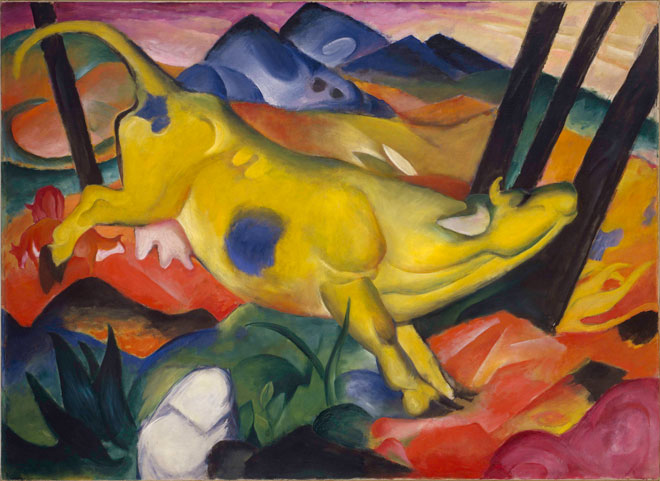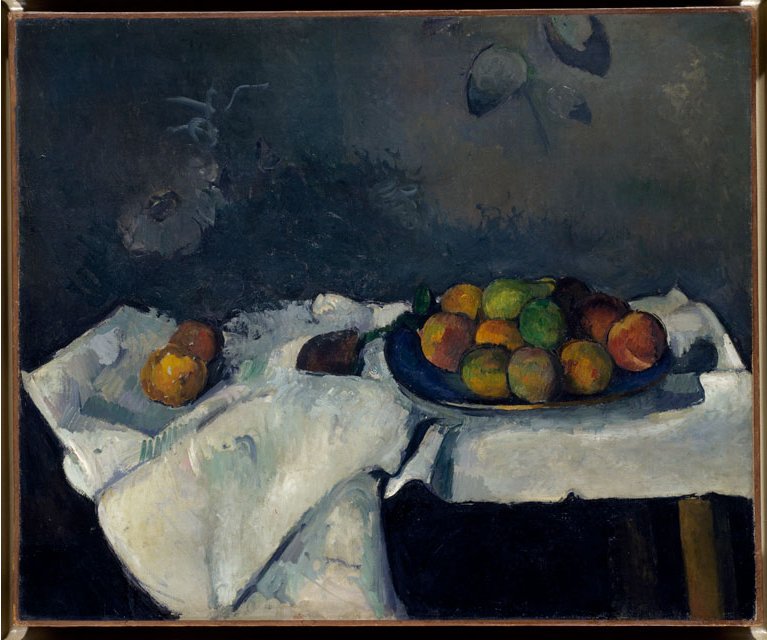Baden – Baden< Germany:
Emil Nolde. The Splendor of Colors was the name of the large-scale summer
exhibition that was mounted at the Museum Frieder Burda from June 15 to October 13,
2013. It is the first extensive presentation of Nolde’s works in southern Germany in many years.
It comprises about sixty oil paintings and twenty watercolors ranging from the beginning of his
artistic career to his late work. The exhibition was developed in collaboration with the Nolde
Foundation Seebüll and was curated by Manfred Reuther, the former director of the Nolde
Foundation.
![]()
Emil Nolde
Großer Mohn (rot, rot, rot) 1942
oil on canvas
73,5 x 89,5 cm
oil on canvas
Nolde Foundation Seebüll
© Nolde Foundation Seebüll, 2013
Emil Nolde (1867–1956) is one of the most important artists of Expressionism. The
comprehensive presentation features the principal themes of his creative work. Besides
landscapes, it includes figure paintings and portraits, religious motifs, as well as impressions
from his journey to the South Sea.
![]()
Emil Nolde
Streitgespräch "Ungemalte Bilder" 1938-1945
water color on paper
23,4 x 18 cm
Nolde Foundation Seebüll
© Nolde Foundation Seebüll, 2013
The lushly colored paintings reveal the complexity of Nolde’s lifeworld. What they all share is the
emotional power of color. Manfred Reuther: “From the beginning of his painterly work, Nolde’s
artistic development was the path to color as an ultimate means of expression, which he
increasingly mastered.” Nolde was convinced: “Colors were a joy to me, and I felt as if they loved
my hands.” His colorful paintings and watercolors testify to his affinity with nature and his search
for primal human states. Radiant red, dark blue, deep black, and intense lilac—these are some of
the expressive colors Emil Nolde used to paint romantic landscapes and dramatic seascapes.
“I love the music of colors.”
![]()
Emil Nolde
Hohe Sturzwelle 1948
oil on canvas
68,5 x 88,5 cm
Nolde Foundation Seebüll
© Nolde Foundation Seebüll, 2013
Manfred Reuther: “In Nolde’s artistic development, the phenomenon of color was not brought to
his attention from outside, was not prepared or guided by theoretical schools of thought; rather,
his distinct propensity for color was a natural, latent gift and qualitative inclination that he
possessed early on and which sought to evolve. Even as a child, the young Nolde was aware of
his inherent urge for pictorial composition and his special talent. He confided in the village
pastor that his secret desire was to become a painter. He recalls his first creative use of colors in
his autobiography: ‘In school, I painted over all of the pictures in my Bible story and even then
constantly lived in the joy of color.’
![]()
Emil Nolde
Am Weintisch 1911
oil on canvas
88,5 x 73,5 cm
Nolde Foundation Seebüll
© Nolde Foundation Seebüll, 201
In the difficult position of not having any appropriate materials, he found his own, attempting his
first paintings with elderberry or beet juice. His parents appear to have recognized their child’s
special longing, and he received the paint box he so eagerly desired for Christmas.”
Nolde dealt intensely with color studies during his years as a teacher at the Museum of Industrial
Art in St. Gallen. “I somewhat boldly sought to unite the most contradictory, the warmest and the
coldest—vermillion and indigo—on a white ground, and that was much too deliberate,” he reports.
“I tore up the sheet.” He began to experiment with colors in about 1903 by investigating the
effect of certain chemicals on wood and their chromatic changes. He was especially interested
in the relation between light and color.
![]()
Emil Nolde
Trollhois Garten, 1907
oil on canvas
73,5 x 88 cm
Nolde Foundation Seebüll
© Nolde Foundation Seebüll
For his painting, Nolde chose colors that occur in nature. By intensifying the color values he
observed in nature and placing them directly alongside one another in a painting, he succeeded
in heightening the expressiveness and brilliance of the color in such a way that its impact
extended far beyond impressions received in nature. “A color defines its neighboring color
through its radiance,” is how Nolde described his approach, “in the same way as in music a
sound attains its tonal effect from its neighboring sound.” He did not pursue a specific scheme
or a programmatic system; rather, in most cases the picture and its chromatic definition came
about during the painting process itself. Nolde is confident that “a painter does not need to know
much; it is fine if he can spontaneously paint as purposefully as he breathes, as we walks.” He
continues: “I therefore avoided any speculation in advance; a vague idea of color was sufficient,
the painting unfolded under the work performed by my hands.”
![]()
Emil Nolde
Tropensonne 1914
oil on canvas
71 x 104,5 cm
Nolde Foundation Seebüll
© Nolde Foundation Seebüll
Numerous Watercolors
In addition to his lushly colored oil paintings, Nolde’s numerous watercolors reflect his eagerness
to experiment. Manfred Reuther explains: “His painting with watercolors is characterized by
extraordinary diversity. The unique quality of watercolors accommodated his pursuit of
spontaneity and direct expression. He painted with a completely drenched, heavy brush in rapid,
fluid movements, attempting to switch off his inhibiting reason and primarily follow his instinct.
Pictures grew out of irregularities, spots, and dribbles. The painter sought to encounter and
achieve a union with the pictorial material with the directness of artisanry.”
The works on paper being presented in Baden-Baden include several from the Unpainted
Pictures series, watercolors that the artist completed in his studio in Seebüll “from his
imagination” during the period he was barred from painting.
Virgin Soil Remains His Home
Nolde traveled frequently and to distant places. He repeatedly visited Denmark, Switzerland, and
Italy for longer periods; toured Andalusia and Madrid in 1921; and in 1913–14 he traveled via
Moscow, Siberia, Korea, Japan, and China to the South Sea, where he participated in the
“medical-demographic German-New Guinea-Expedition” at the invitation of the “Imperial Colonial
Office.” Motifs from all of these worlds found entrance in his art. However, in his understanding
of himself as an artist, he remained connected with his home all his life. He believed the “primal
ground” of his artistry to be “deeply rooted in the soil of his immediate home. Even if my
knowledge and my longing for artistic growth and means of representation extend to the most
distant primeval regions, be it in reality, in my imagination, or in a dream—virgin soil remains my
home.”
![]()
Emil Nolde
Tänzerin und Harlekin 1920
oil on canvas (burlap)
85,5 x 100 cm
Nolde Foundation Seebüll
© Nolde Foundation Seebüll
Emil Nolde loved flowers, and everywhere he spent time he laid out a garden. Whether blue
larkspur, red cornflowers, lilac irises, or yellow sneezeweed plants: the artist found inspiration in
the colorful floral splendor, and it served as a motif for numerous paintings of flowers and
gardens. In conjunction with this large-scale showcase exhibition, the Baden-Baden Department
of Parks has laid out four large flowerbeds along Lichtentaler Allee.
![]()
Emil Nolde, Frühling im Zimmer, 1904, 88,5 x 73,5 cm, oil on canvas. Nolde Foundation Seebüll, © Nolde Foundation Seebüll, 2013.
“The chromaticity of each flowerbed reflects that in one of the flower paintings by Emil Nolde
being presented in the exhibition. All of the beds have a wooden frame, like a picture frame. We
adapted their dimensions to the paintings’ formats and multiplied them sixfold,” explains Markus
Brunsing, Director of the Baden-Baden Department of Parks, who developed the concept for the
flowerbeds. However, the paintings were not reproduced in flowers one-to-one; rather, the
atmospheres of color are expressed with blossoms, painting in the park with the colors of
blossoms.
More imagesSixty different varieties and kinds of annual summer flowers were planted. Because Nolde uses
vibrant colors, these beds contain flowers in radiant red, orange, yellow, and blue, including
snapdragons, bluetops, begonias, garden cosmos, bluebells, poppies, garden heliotropes, sage,
and larkspur. This is the first time that the thematic aspect of an exhibition is being rendered in
nature using plants.
The exhibition catalogue, which includes illustrations of all the works, was published by the
Snoeck Verlag (Cologne).
___________________________________________________________________________________________________
Vienna:
Emil Nolde - In Radiance and Colour , from Oct 25, 2013 until Feb 2, 2014 at the Osterreichische Galerie Belvedere, Vienna, Austria, shows major works from the collection of Stiftung Seebüll Ada und Emil Nolde, the Kunsthalle in Hamburg and other museums and private collections. They include landscapes, seascapes, portraits, Berlin scenes, religious pictures and fantasies, and high-quality series of watercolours and almost 50 sheets of Unpainted Pictures. The exhibition also features selected works by Austrian artists like Werner Berg, Herbert Boeckl, Oskar Kokoschka and Max Weiler, who took inspiration from Nolde’s colour explosions.
![]()
The show presents works from all of his creative periods, ranging from his early garden paintings informed by Impressionism, biblical subjects, and illustrations of legends to pastels painted in the South Seas, the Unpainted Pictures, which he conceived while he was forbidden to paint, and his famous late flower compositions. These works are complemented by a number of the artist’s prints, as well as selected works by such Austrian painters as Oskar Kokoschka and Herbert Boeckl, who drew their inspirations from Nolde’s art.
![]()
Around 1911/12, Nolde started developing his personal style. By way of the colourful Impressionism of his garden paintings made around 1907 and his religious subjects painted in 1910, exhibiting a new brilliance of colour and streaky brushwork, the artist arrived at a manner of painting that emphasized glowing, saturated colour fields and omitted detail. The large diversity of subject matter in his unmistakeable oeuvre includes grotesque fantastic creatures, ecstatic dancers, and scenes from Berlin nightlife, but also biblical subjects and Christian legends, as well as the landscape of his native Nordschleswig and atmospheric seascapes of the North and Baltic Seas. Nolde’s affinity with nature and his constant search for primitive authenticity prompted him to travel as far as New Guinea, where he hoped for inspiration removed from Western civilization.
Nolde’s direct approach to painting and his unique treatment of colour culminated in the immense Unpainted Pictures, painted in secreted because of the ban on painting imposed on him on 23 August 1941. Expelled from the Reichskunstkammer, he was forbidden from doing anything connected with the visual arts. This was a great shock for the painter, who like many other artists had originally welcomed the Nazi rise to power, hoping after the trauma of the First World War and the Treaty of Versailles that it would give Germany direction and restore its belief in itself. Between 1938 and 1945 he painted over 1,300 small watercolours and gouaches with invented, mostly fantastic imagery, in his studio in Seebüll, of which almost 50 are being shown in the Lower Belvedere. In doing so, he created faces, figures and fantastic half-man, half-animal creatures from accidental splashes of paint. He also painted landscapes from memory, including blood-red seas or rocky shores dipped in lapis lazuli.
![]()
Emil Nolde: In Radiance and Colour: Catalogue of the Exhibition in Wien / Österreichische Galerie Belvedere



,_1872.jpg/730px-Camille_Pissarro,_Le_verger_(The_Orchard),_1872.jpg)

++Carmen+Gaudin+,+1885.jpg)
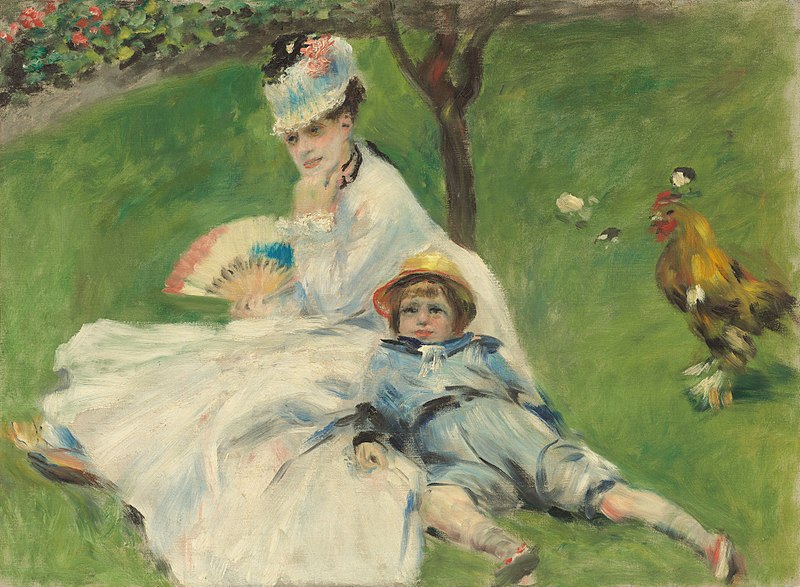












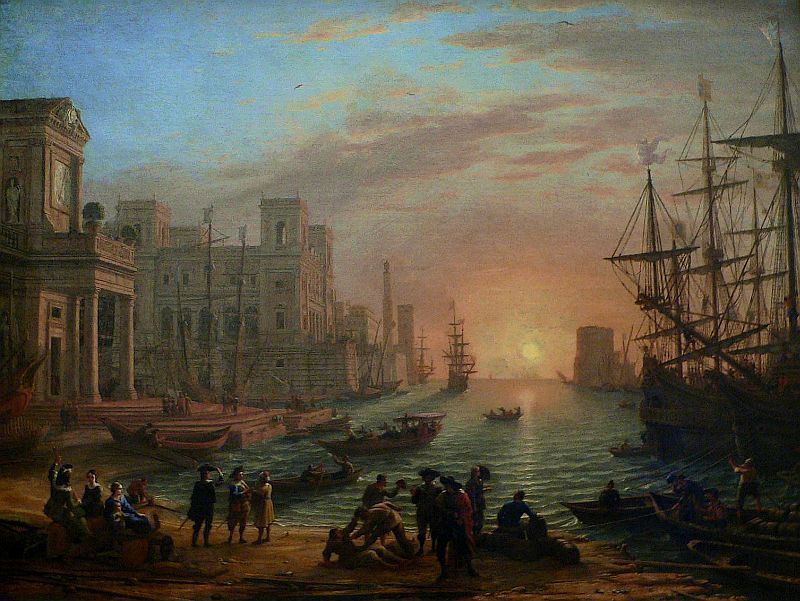
























%20Lied%20van%20de%20blauwe%20wolken,%201907-1908%20(2)_original.jpg?w=325&h=480&mode=max&404=backup)





,%201917-1918_original.jpg?w=325&h=480&mode=max&404=backup)
,1920-1922_low_original.jpg?w=325&h=480&mode=max&404=backup)

,%201920-1921_original.jpg?w=325&h=480&mode=max&404=backup)




























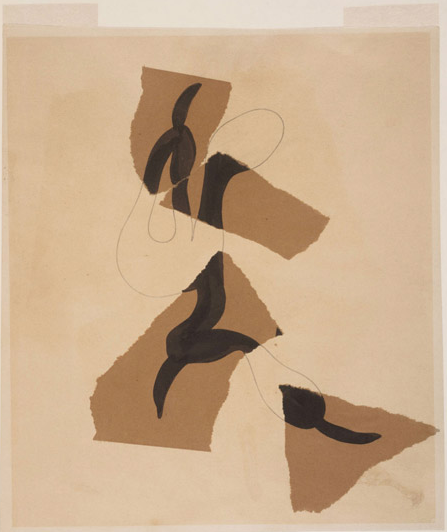












































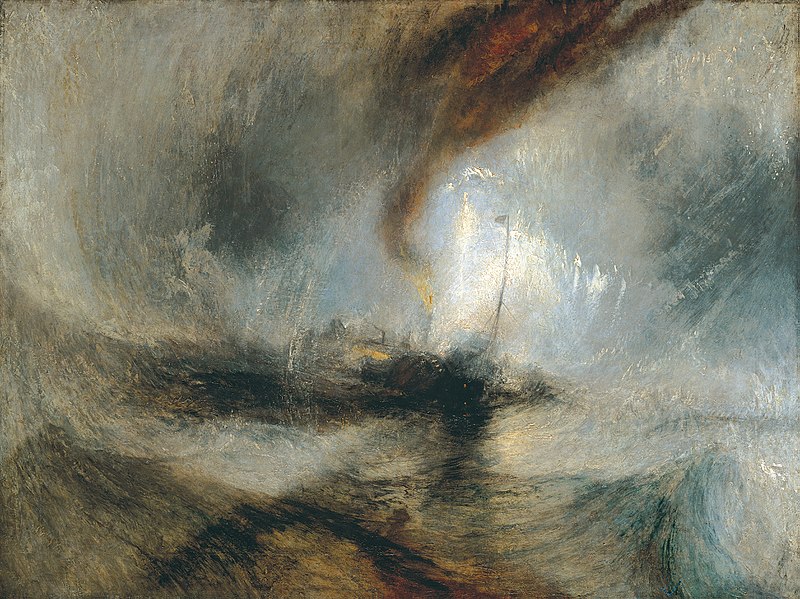




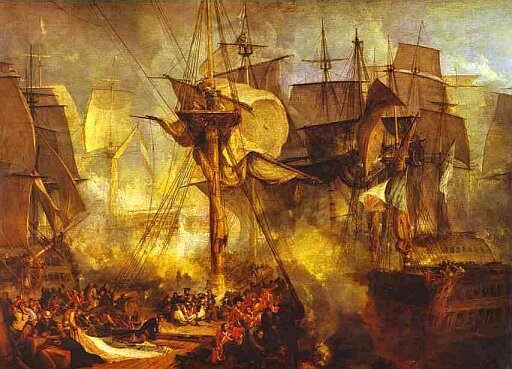











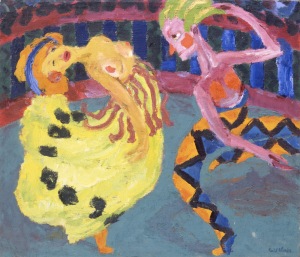




_-_Google_Art_Project.jpg/817px-Portrait_of_a_Black_Sailor_(Paul_Cuffe%3f)_-_Google_Art_Project.jpg)






_-_Grand_Canyon_of_the_Colorado_River_-_Google_Art_Project.jpg/800px-Thomas_Moran,_American_(born_England)_-_Grand_Canyon_of_the_Colorado_River_-_Google_Art_Project.jpg)












